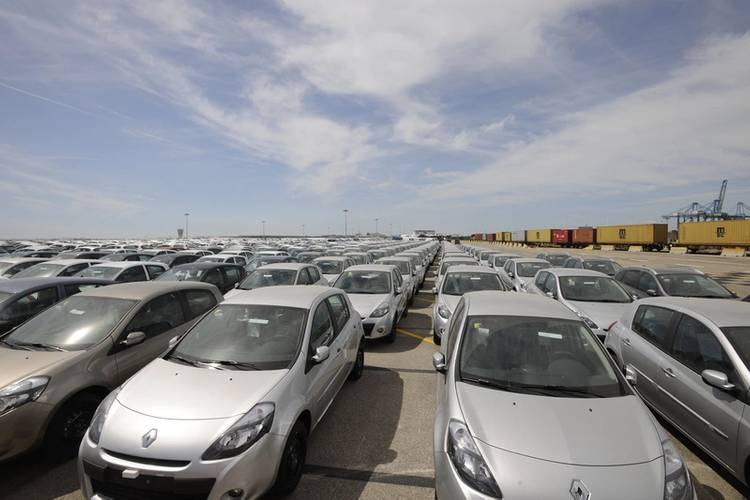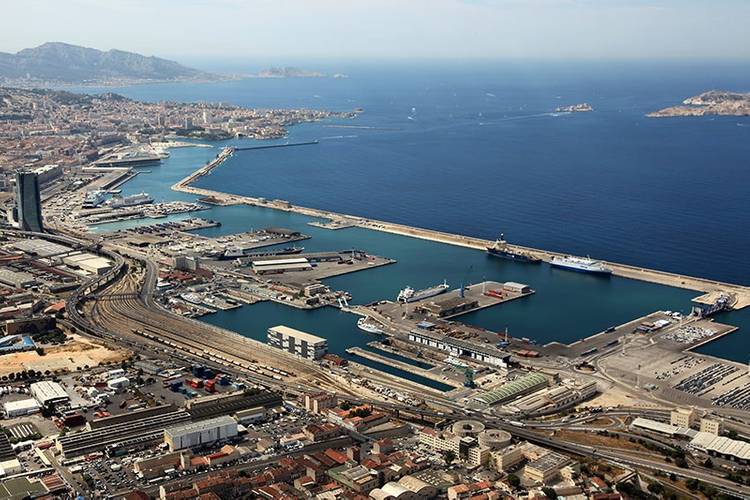New Car Terminal at Marseilles Fos Port
Following a call for tenders in November last year, the Marseilles Fos port authority has chosen automotive logistics specialist TEA – part of the Charles Andre transport group - to develop and operate an import/export terminal for new cars at the Brule-Tabac quay in Fos.
The decision was announced during a review of the port’s first five years under a revised management structure decreed by the French government in 2008. This established three governing bodies – the executive, supervisory and development boards – which are about to be renewed after completing their 2009-2013 terms of office.
The new 14-hectare car terminal is due in service from February and will have capacity for up to 60,000 cars a year from a client base of international manufacturers. In 2012 the port handled 220,000 new vehicles at two existing facilities - the nearby Gefco base in Fos and the Pinede Nord terminal in Marseilles.
In a feature of TEA’s winning bid, the port’s third car terminal will be notable for providing a pre-delivery inspection (PDI) service. The company is equipping a dedicated preparation workshop for procedures such as fitting accessories and checking electronics.
Numerous other initiatives featured in the five-year review, which covered a period significant for the implementation of national port reforms in 2011. A summary of milestone achievements included:
- The two new Fos 2XL container terminals coming fully on stream in 2012. The Terminal de Mediterranee, operated by Portsynergy/Eurofos, and the Seayard terminal have doubled capacity and also offer room for growth
- The operation of all terminals by private companies, leaving the port authority to focus on infrastructure. This step enhanced industrial relations and workforce reliability, prompting customers to return and boosting both volumes and productivity
- The transfer of 410 port authority employees to the private operators. Uniquely in France, this included maintenance personnel. In total, 160 went to the Fos container, ore and cereals terminals; 40 rejoined the Marseilles container terminal; and 210 joined Fluxel, a company specially formed to manage the Fos and Lavera oil installations
- Fluxel was formed with the port authority holding a 66% share in recognition of the national interest. The other stakeholders are chemicals and oil products manufacturer INEOS and companies operating the south European pipeline and inland waterways services
- The re-launch of shiprepair in 2010. Italian company San Giorgio del Porto won a tender and formed Chantier Naval Marseille to operate drydocks 8 & 9. In 2012 these companies joined a consortium to reopen drydock 10 – the largest in Europe – as a cruiseship repair centre due on stream in 2015
- The expansion of cruise activity – virtually non-existent at the port 20 years ago, but set to pass one million passengers in 2013. The port entrance is being enlarged in a €35 million project enhancing access by latest generation cruise vessels
- The launch of the Combined Transport Terminal project in 2011. Featuring high volume rail links, the terminal will be alongside the Med Europe container terminal in Marseilles, where 85% of onward moves are currently by road
Traffic trends
Container traffic at Marseilles Fos has grown 29% over the past five years, rising from 0.88 million teu in 2009 to a forecast 1.1m teu in 2013. In the same period, total cargo throughput has dipped 3% from some 83 million metric tons in 2009 to around 81MT for 2013 - largely due to lower oil volumes – which would be 6% less than the 2012 total of 85.6MT.
Compared with 2012, the expected total for 2013 sees liquid bulks down 11% on 49.8MT due to falling demand for crude and refined oil products. General cargo is set to rise 3% to 17.8MT, which includes 11MT (+6%) for containers. In unit terms, the deepsea Fos terminals are on course to handle 0.9m teu (+8%) for the year. Dry bulks are also set for an 8% increase on 13.3MT, driven by 9MT (+16%) in raw materials for the steel industry.
Passenger volumes are likely to improve 5% to 2.6 million, with cruise sector throughput up 24% to 1.1 million. Ferry carryings are estimated at 1m (-5%) for Corsica and 0.5m (-8%) for North Africa.
Board renewals
The renewed supervisory board is expected to be installed in early January, when the chairman will be elected. The 17 members include five State nominees, four from local government, three representing port authority personnel and five independent professionals. The board sets strategic policy and oversees management of the port, including input on who the government proposes to head the four-strong executive board with effect from February.
The development board’s installation meeting and election of a chairman will also take place in February.


















